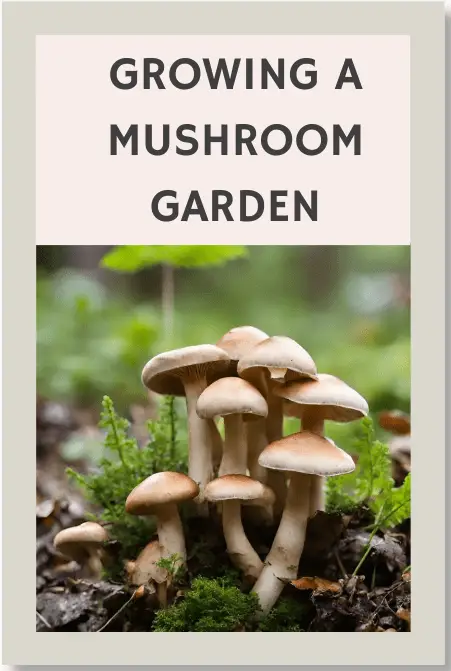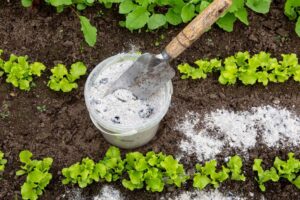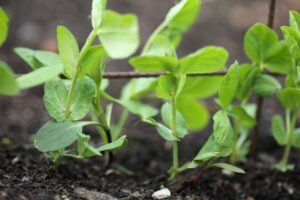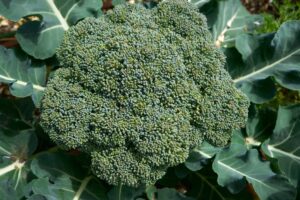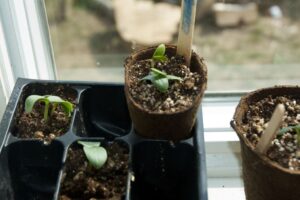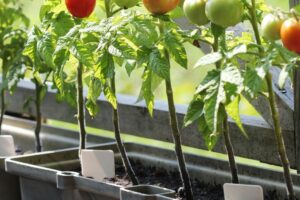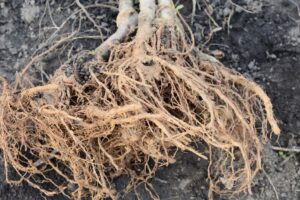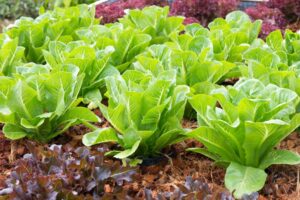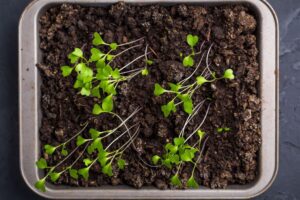Disclaimer: This blog post contains affiliate links. If you make a purchase through these links, I may earn a small commission at no additional cost to you. Learn More. Thank you for supporting our garden community.
How to Grow Garden Mushrooms in Your Backyard
Last Updated: September 8, 2024
If you are a gardener looking to expand your horizons and add some flavorful variety to your vegetable harvests, consider growing garden mushrooms. Mushrooms provide a unique taste in the kitchen, so why not grow them yourself. In this post, we will delve into the world of garden mushrooms, exploring their history, their optimal conditions for growth, best substrates, beginner-friendly varieties, harvesting techniques, and the various ways in which mushrooms can be utilized.
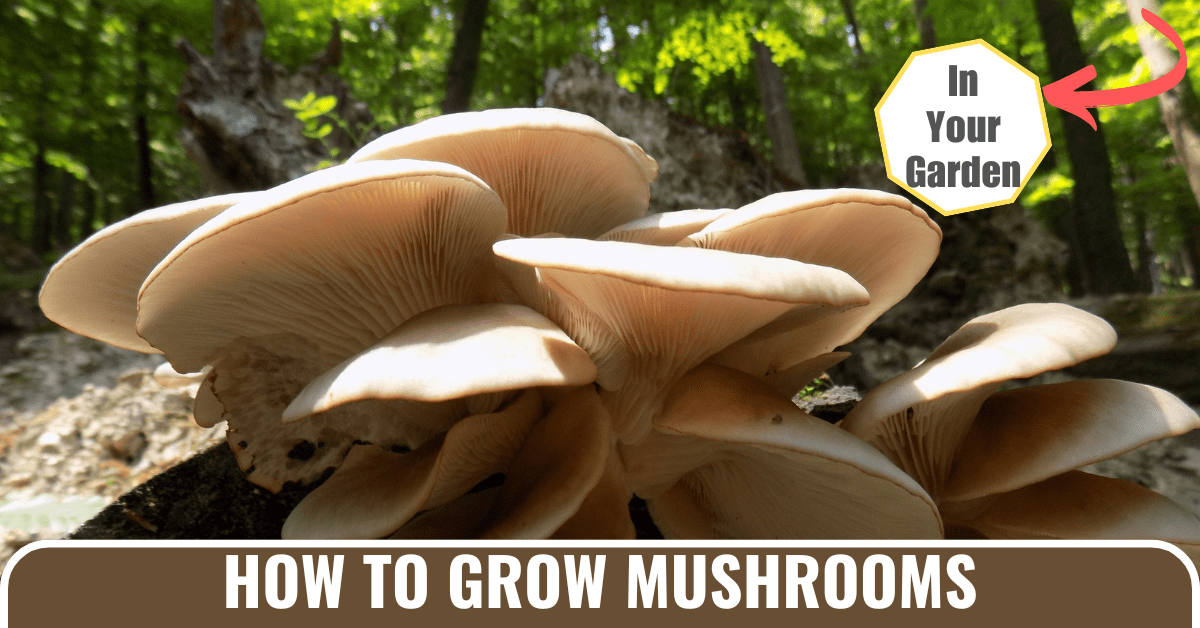
I have grown wine cap mushrooms in my garden, and I recommend those to any beginner mushroom gardeners as they are very easy to identify.
Growing a Mushroom Garden
Here’s what you’ll learn from reading this article:
- You will learn about the history of mushrooms as a food source, their significance in ancient civilizations, and their continued popularity in modern gastronomy.
- You will gain insights into the optimal growing conditions for mushrooms, including temperature and the importance of air circulation.
- Additionally, we will discover the best substrates to use for mushroom growth. You will also be introduced to beginner-friendly mushroom varieties like oyster mushrooms.
- Lastly, we will explore the diverse uses of mushrooms beyond the kitchen, including composting and medicinal applications.
The History of Mushrooms as Food
Mushrooms have been consumed for thousands of years, with their usage dating back to ancient civilizations like the Egyptians, Greeks, and Romans. In fact, the Egyptians believed that mushrooms possessed powerful and mystical properties. They were also seen as an exotic delicacy, sought out for their unique texture, flavor, and medicinal benefits.
Mushrooms were first cultivated around the 7th century AD during the Tang Dynasty in China. The first mushroom to be grown at this time was the wood ear mushroom (Auricularia auricula-judae). The spores would “magically” appear on logs covered in bran and straw after they have been pasteurized.
Over time, mushrooms became a staple in many culinary traditions, offering an array of tastes that add depth and complexity to dishes. Today, they are grown all across the globe and showcase a diversity that encapsulates both tradition and innovation in gastronomy.
How do Mushrooms Grow?
Mushroom growth is a fascinating process that differs from that of both plants and animals. While mushrooms are commonly considered to be closely related to plants, if not plants themselves, they are actually more closely related to animals than to plants (what!?).
That being said, plants use sunlight for photosynthesis, while mushrooms rely on organic matter as their food source. Fungal networks break down organic matter into usable forms that they can use for their nutrition.
The mycelium, a network of fine hair-like structures, develops within the substrate, breaking down the organic matter and eventually producing fruiting bodies we recognize as mushrooms. These mushrooms emerge, releasing spores, which get carried by the wind (similar to seeds, but microscopic) to land somewhere else and produce a whole new colony.
The substrate is the medium on which the mycelium is growing. It is typically composed of mostly organic matter, such as wood chips, straw, or logs.
This process of mycelium colonization and fruiting body formation adds an air of mystery and allure to mushroom cultivation in our gardens.
Garden Mushroom Growing Conditions
For successful mushroom cultivation, it is vital to create optimal growing conditions. Mushrooms thrive in moist and cool environments, with moderate temperatures ranging between 55 and 65°F (13-18°C). The pH level of the soil should be slightly acidic, ideally around 6.0-6.5, to facilitate their growth.
Additionally, mushrooms require a dark environment, which is why many gardeners choose shaded areas or build their own grow spaces. While some sunlight is ok, mushrooms don’t need it for proper growth and may actually burn under intense light.
Air circulation is also crucial, ensuring enough oxygen exchange and preventing the growth of competing organisms.
This is what makes mushrooms so amazing to grow in your backyard garden; they can grow virtually anywhere!
Ideal Mushroom Growing Spots in Your Garden
Choose shaded areas in your garden for growing mushrooms. These spots can be under trees, north-facing walls, structures like pergolas or sheds, or even among your tall-growing vegetables crops like tomatoes and peppers. Avoid direct sunlight as it may dry out the mushroom substrate.
Good air circulation is important to prevent competition and maintain moisture.
Spots such as in the mulch of your vegetable garden, on wooden logs, in the compost pile, or in their own dedicated mushroom bed are perfect for growing garden mushrooms in your backyard.
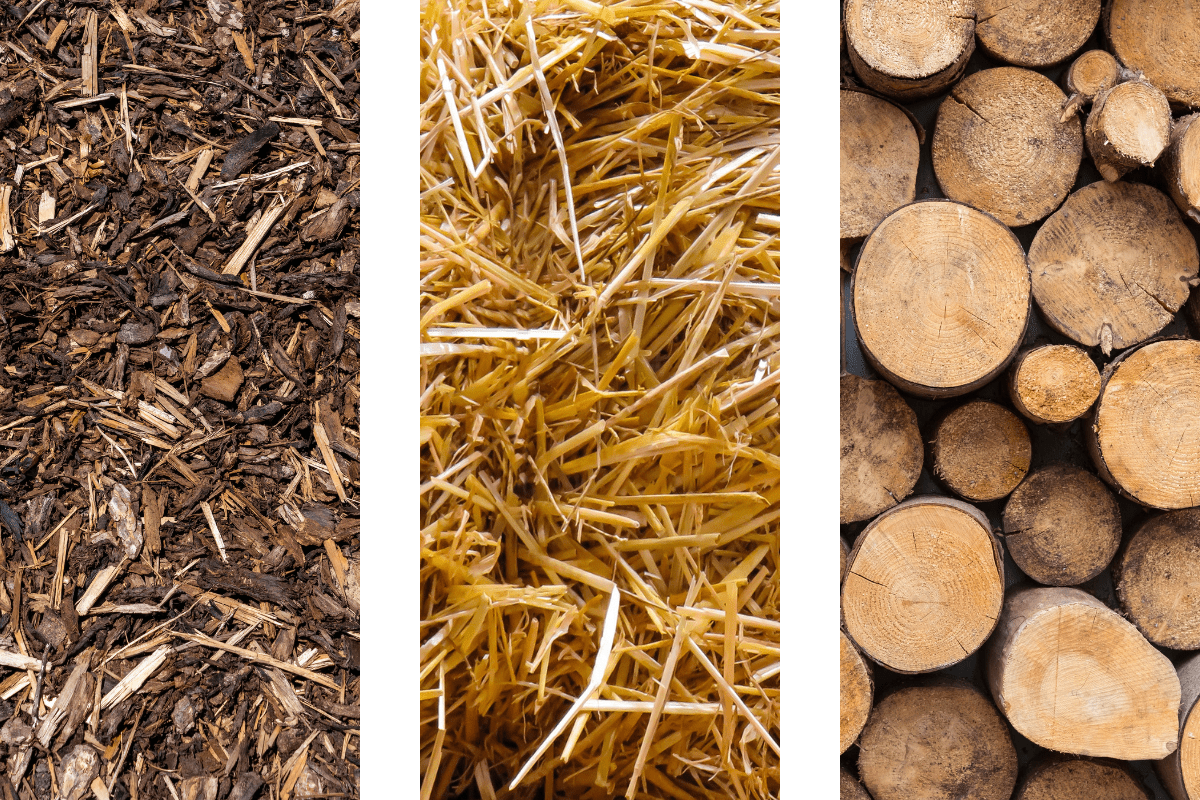
Best Substrates for Mushroom Growth
The choice of substrate greatly influences the success of mushroom cultivation. The most common substrates include straw, wood chips, sawdust, and composted manure.
Straw is relatively easy to obtain and work with, making it a popular choice among beginner mushroom growers. Wood chips are another excellent option, accommodating a variety of mushroom species. Sawdust, often supplemented with other materials, is suitable for specialized varieties such as oyster mushrooms.
Composted manure is particularly beneficial for species like the button mushroom, offering necessary nutrients and water-retention properties.
Generally, think carbon-rich organic matter. These will be the best substrates for growing mushrooms.
I tend to lean towards wood chips for my mushrooms. They are easier for me to obtain and they last much longer compared to other substrates.
Be careful with sawdust and straw, as these substrates can be broken down extremely quickly by mycelium networks. This may cause the mushrooms to run out of nutrients and die.
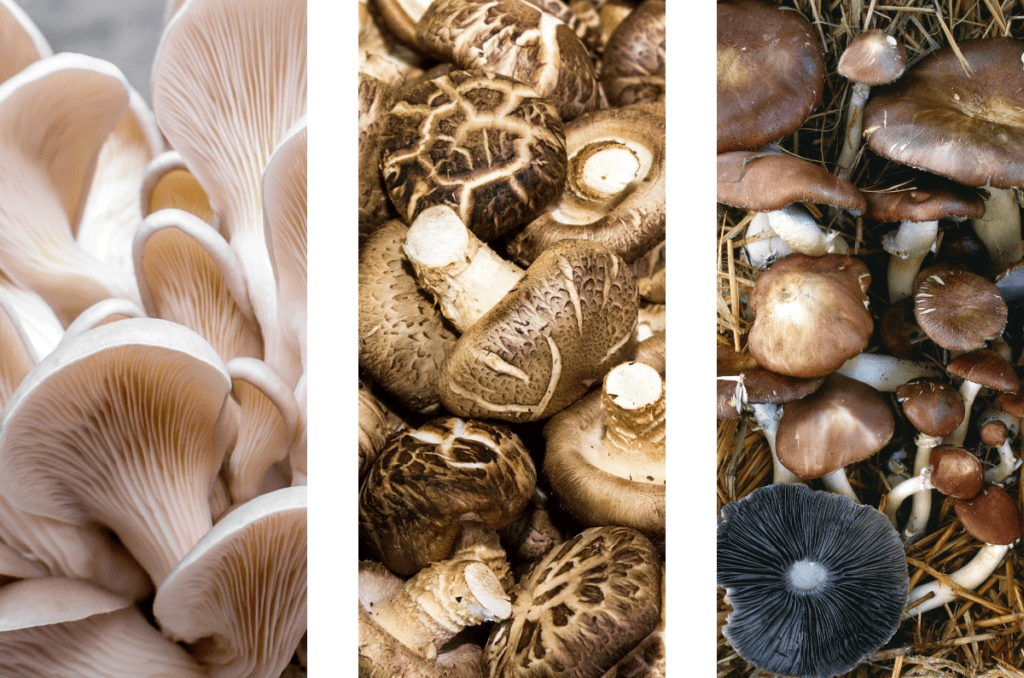
Beginner-Friendly Mushroom Garden Varieties
For beginners, it is recommended to start with mushroom varieties that are relatively easy to grow and identify. Some examples include oyster mushrooms (Pleurotus ostreatus), shiitake mushrooms (Lentinula edodes), and wine cap mushrooms (Stropharia rugosoannulata).
All 3 of these mushrooms are easily identifiable, have few lookalikes, and are not demanding when it comes to growing conditions.
Harvesting Techniques and Timing
Once your mushrooms have reached maturity, it’s time to harvest and enjoy the fruits of your labor. Before eating any mushrooms, confirm its identity with the edible variety that you grew. If you are unsure about the ID of any mushrooms you have grown, do not eat them. Only until you are 100% sure that you have correctly identified the mushroom can you eat it.
It’s crucial to gauge the ideal moment for harvesting, as different varieties have varying growth patterns.
In general, mushrooms are best harvested when the caps have flattened or have become convex and the gills are enlarged and dropped spores. To harvest, gently twist or cut the stem at the base to separate the mushroom from the substrate.
There is some debate about whether or not you should pull mushrooms out of the ground. But remember, mushrooms are not plants; this is nothing like pulling plants out of the ground. Pulling a mushroom out of the ground causes the same amount of damage to the fungus as harvesting an apple would cause the tree; basically nothing!
And always remember this: Bigger isn’t always better! Sometimes, mushrooms get very woody when left growing for too long. This is not good for your harvest.
Most garden mushroom varieties will produce more mushrooms after the initial harvest. Additionally, they may overwinter in your garden, depending on how cold it gets in the winter. This means that you won’t have to buy mushroom spawn every year.
Different Uses for Mushrooms
Mushrooms don’t just grace our plates; they have a multitude of other applications. For those interested in sustainable practices, mushrooms can be used in composting. They can break down organic matter efficiently, transforming it into nutrient-rich soil amendments, known as mushroom compost.
Mushrooms are also being explored in the field of medicine, with ongoing research into their potential anti-inflammatory, antibacterial, and immune-boosting properties. Furthermore, mushrooms can be utilized for natural dyeing, creating vibrant and earthy colors for artistic or fabric purposes.
Frequently Asked Questions
Yes, garden mushrooms are generally good for the soil. They play a crucial role in breaking down organic matter, contributing to the nutrient cycle that benefits garden plants.
Most mushrooms do not pose a threat to lawns or garden plants. They are saprophytic, which means they feed on dead organic material, not live tissue.
Oyster, shiitake, and wine cap mushrooms are the best mushrooms to grow for consumption. Not only are they great for beginner mushroom growers, but they also offer the traditional mushroom flavour profile and are often considered gourmet varieties.
Even More Gardening Ideas
Here are a few more posts to get the ball rolling in your garden!
- 30 Yellow Flowering Herbs You Need to Grow
- Comprehensive Guide to Planting Brassicas for Fall
- 20 Fast Growing Vegetables to Plant in September
Products
For all-purpose organic fertilizers, check out Fishnure.
To buy organic, non-GMO lavender seeds, check out SeedsNow.
For a wide selection of perennial garden plants, check out Nature Hills Nursery.
For gardening equipment, check out Bootstrap Farmer
Growing mushrooms in your garden is a fascinating endeavor that combines history, science, and culinary creativity. By understanding the optimal growing conditions, selecting appropriate substrates, and starting with beginner-friendly varieties, you can embark on a fulfilling journey into mushroom cultivation.
From harvesting techniques to the diverse uses they offer, mushrooms have the potential to enrich not only your garden but also your culinary palette and sustainable practices. So, why not unlock the magic of fungi and explore the world of a mushroom garden today?
If you found this article informative, consider sharing it with your gardener friends. Also, make sure to sign up for our email newsletter. Don’t worry, we won’t spam you, we’ll just send you new and fresh gardening ideas every Monday and Friday.
If you want to learn more about gardening, foraging, nature, and sustainability, check out The Real Gardener on Instagram, YouTube, and Pinterest.
Pin this post for later:
